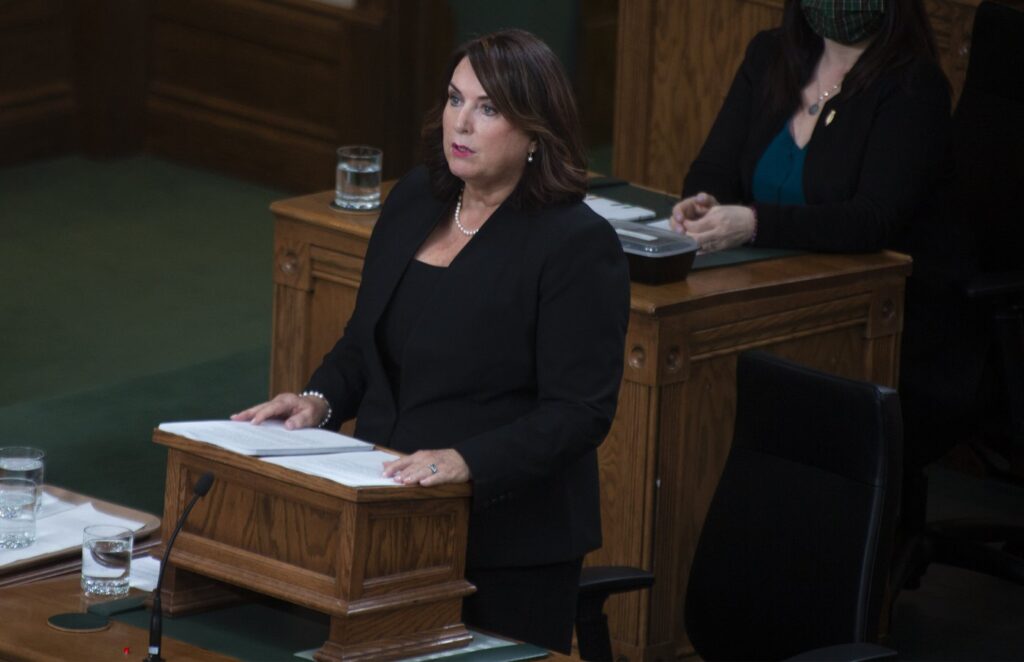
Siobhan Coady, deputy premier and finance minister of Newfoundland and Labrador, delivers the provincial budget in the House of Assembly, in St. John’s, Thursday, April 7, 2022. THE CANADIAN PRESS/Paul Daly
Paul Daly
Soaring oil prices and unexpected tax windfalls have driven a sea change in Newfoundland and Labrador’s financial outlook for the fiscal year, putting the province on course to post its first surplus in more than a decade.
The province unveiled its mid-year economic update Wednesday, which projects a $479-million surplus for the 2022-23 fiscal year. The figure marks a sharp contrast from the $351-million deficit originally predicted in the budget tabled last April.
The last time the province recorded an official surplus was in the 2011-12 fiscal year, government officials told reporters.
Though revenues are about $1.3 billion more than initially forecast in April, Finance Minister Siobhan Coady warned the good fortunes may not be here to stay.
“Yes, we’re taking in more revenues this year, and that’s contributing to our surplus,” she said. “But what I will say is when you budget next year, we’ll be looking at a different scenario.”
Newfoundland and Labrador has long struggled to balance its books, as the costs of delivering services to one of the country’s most sparsely populated provinces have often outweighed government revenues, which are heavily reliant on royalties generated by the four offshore oilfields pumping off the coast of St. John’s.
Wednesday’s update projected the province would end the fiscal year with a net debt of about $16 billion — down more than $1 billion compared to what was projected in the budget. In a province of about 525,900 people, that works out to nearly $30,500 per person. The province is also forecasting that it will need to borrow less money: $1.8 billion for 2022-23 instead of the $2.7 billion projected in April.
Coady said she was hesitant to predict that the province would have another surplus in the 2023-24 fiscal year. She warned that an “unexpected” bump of about $400 million in corporate and private income tax revenue was likely a one-time occurrence due to a stronger-than-anticipated economy.
“We have, nationally, a stronger economy than was anticipated,” she said. “Therefore, what you’re seeing across the country are these one-time resets in terms of revenue from corporate income tax and personal income tax. And they will normalize, likely next year.”
Record oil prices are projected to bring in $375 million more in royalties this fiscal year compared to what was budgeted in April. Newfoundland and Labrador is home to four offshore oilfields, and three are currently operating and paying royalties into provincial coffers. The fourth oilfield — Suncor’s Terra Nova field — is expected to resume operating toward the end of the year, officials said.
Oil is notoriously volatile, so the province has established what it calls a “future fund,” in which it will squirrel away some oil revenue to help pay expenses, such as debt, Coady said. She announced the government’s intent to make its first deposit to the fund — totalling about $157 million — though she did not say when that would happen.
